Vegetable crops will begin to take longer to ripen in September. Give melons, limas, and tomatoes more time to ripen naturally. Eggplants are ready for harvest when they are shiny.
Beans, cucumbers, melons, zucchini, and summer squash will not ripen or mature once they are picked. They will keep for a week or two in the refrigerator.
Large cabbages and broccoli side shoots will come to harvest in cooler regions. Cut-and-come again harvest of lettuce, spinach, and greens will stimulate new fall growth.
Dig regular potatoes and sweet potatoes as late as possible, just before frost threatens. Pick all tomatoes, peppers, beans, vine crops, winter squashes, and other tender vegetables before the first hard frost.
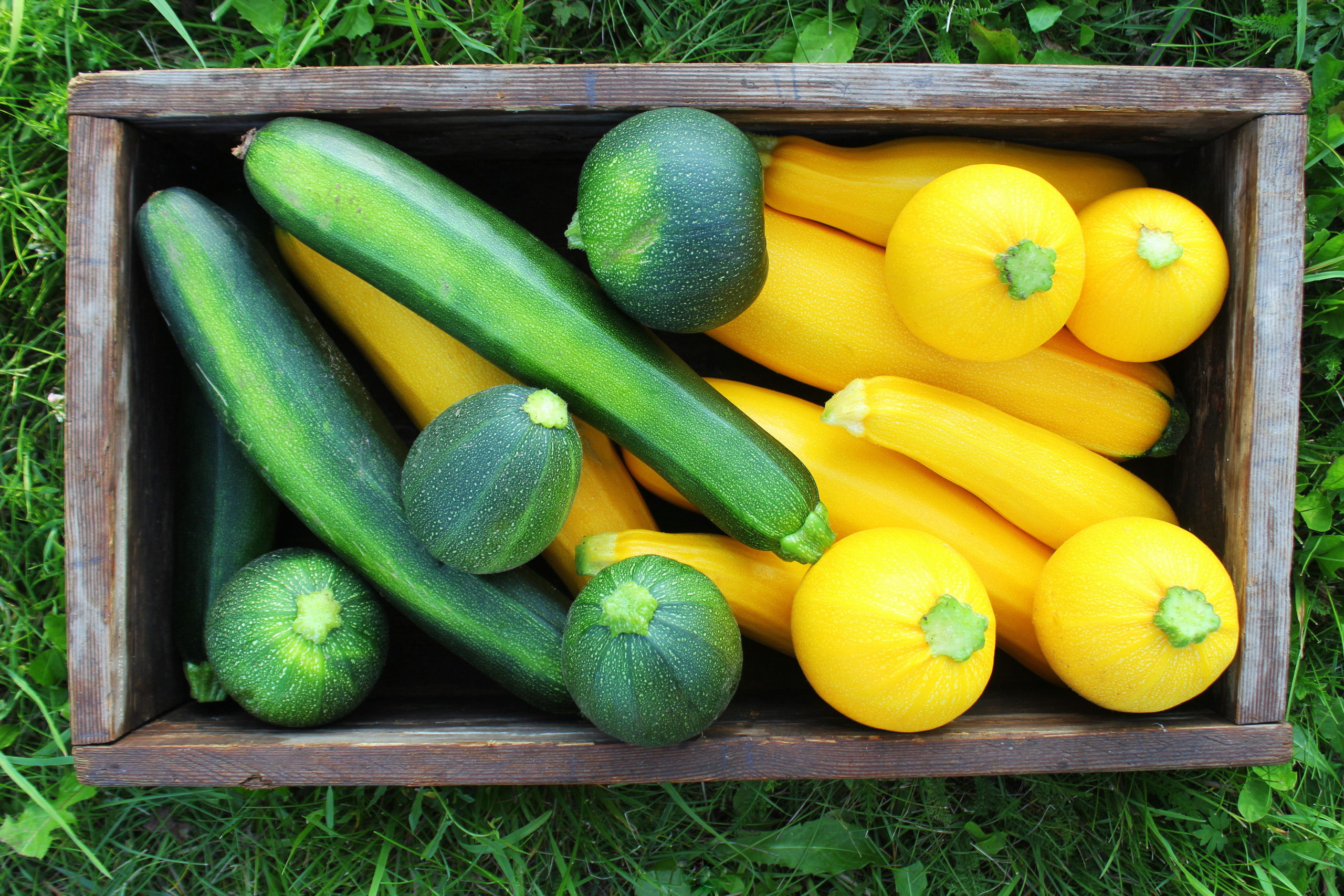
The weather will direct your efforts in the vegetable garden in September. Frost may strike even the mildest of regions before the end of the month.
Know the average first frost date for your area. This date will allow you to plan your garden activities and prepare for cold weather in advance. The average first frost date can vary from year to year but when the first frost comes your warm-weather crops will be done for the year unless you take steps to protect them and extend their season. Check with a nearby garden center, master gardener program, or your county agriculture commissioner’s office to learn the average first frost date in your region.
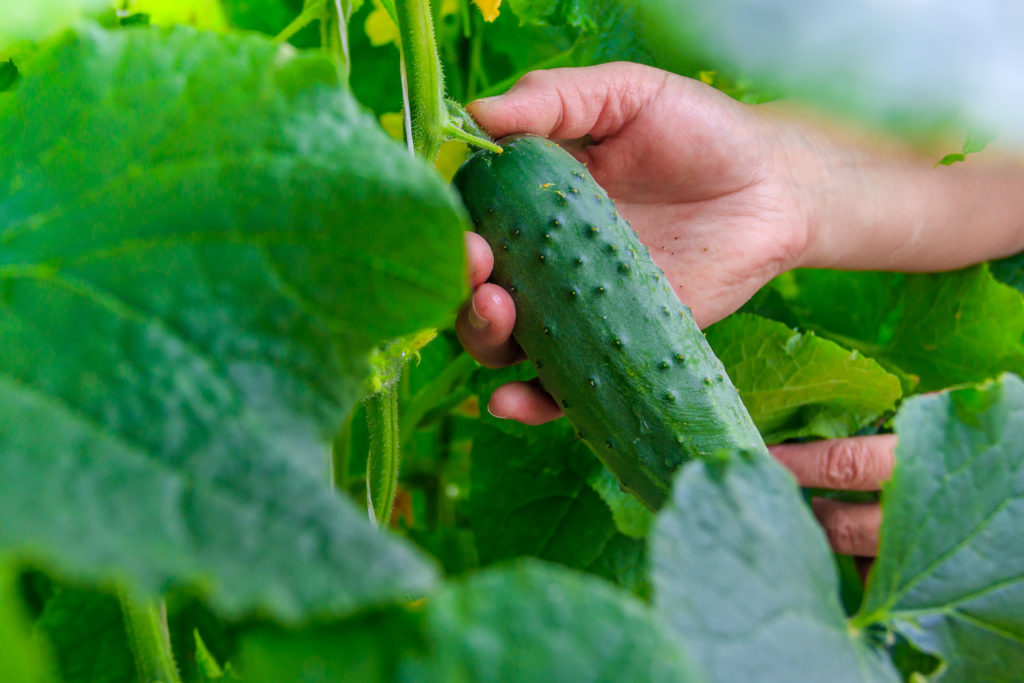
Planting in September
In mild-winter region planting, cool-season vegetables can be planted in September. Plant now beets, broccoli, Brussels sprouts, carrots, cauliflower, celery, fava beans, kale, kohlrabi, leeks, both head and leaf lettuce, mustard greens, onions, parsley, peas, potatoes, radishes, rutabagas, spinach, Swiss chard, and turnips.
Here is a planting schedule by region for September:
Cooler northern regions–Zones 3-6: Vegetables: broad beans, buckwheat, cabbage, Chinese cabbage, cress, leek, lettuce, onion, radish, spinach, spring onion, strawberry runners, turnip. Herbs: caraway, chervil, chicory, parsley, salad burnet.
Temperate Regions–Zones 7-9: Vegetables: artichoke suckers, broad beans, beet (beetroot), buckwheat, cabbage, carrot, cauliflower, Chinese cabbage, cress, eggplant, endive, kohlrabi, leek, lettuce, mustard, onion, spring onion, peas, radish, rhubarb crown, Swiss chard (silverbeet), strawberry runners, rutabaga (Swede), turnip. Herbs: angelica, caraway, chervil, chicory, coriander, dill, hyssop, lemon balm, marjoram, oregano, parsley, salad burnet, thyme.
Subtropical and Tropical Regions–Zones 10-12: Vegetables: artichoke suckers, beans, beet (beetroot), broccoli, cabbage, cape gooseberry, cress, cucumber, endive, eggplant, kohlrabi, leek, lettuce, marrow, mustard, onion, spring onion, parsnip, peas, potato tubers, radish, rhubarb crowns, Swiss chard (silverbeet), rutabaga (Swede), tomato, turnip. Herbs: angelica, basil, borage, caraway, celeriac, chicory, chives, coriander, fennel, hyssop, marjoram, salad, burnet.
Harvest in September
Vegetables ready for harvest in September include beans, carrots, chilies, Chinese cabbage, corn, cucumber, eggplant, kale, lettuce, melons, okra, peas, pumpkins, purslane, rutabaga (Swede), summer squash, tomato, turnips, zucchini.
Fruits ready for harvest in September include almonds, apples, avocadoes, brambleberries, grapes, kumquat, figs, hazelnuts (filberts), lemons, melons, mulberries, nectarines, olives, oranges, passionfruit, peaches, pears, pecans, plums, raspberries, strawberries, and tamarillos.
First-of-season harvest: Apples, Brussels sprouts, Delicata, butternut, Kabocha and acorn squash, pineapple and strawberry guava, kale, lima beans, pomegranates, potatoes, pumpkins and decorative gourds, new walnuts, sweet potatoes, winter vegetable starts.
Peak-of-season harvest: Arugula, Asian pears, avocadoes, basil, beets, bell peppers, broccoli, cabbages, cantaloupes, carrots, chard, chipotles, cilantro, cucumbers, dried fruit, eggplants, figs, garlic, grapes, green onions, heirloom tomatoes, herb starts, hot and sweet peppers, leaf lettuce, leeks, melons, mushrooms, nectarines, new potatoes, nopalitos, olive oil, olives, onions, radishes, raisins, raspberries, red onions, Romano beans, salad mix, scallions, spinach, squash blossoms, strawberries, summer squash, sweet yellow onions, table grapes, tomatoes, tomatillos, vegetable plant starts, and herbs including chives, dill, French tarragon, garlic chives, marjoram, parsley, rosemary, Russian tarragon, sage, oregano and culinary bay leaves.
End-of-season harvest: Apricots, Bartlett pears, corn, lemon cucumbers, grapefruit, green beans, lavender, lemons, peaches, plums, scallions, oranges, scallions, shelling peas, snow peas, tomatoes, turnips, yellow waxed beans, yellow peaches, watermelons, zucchini.
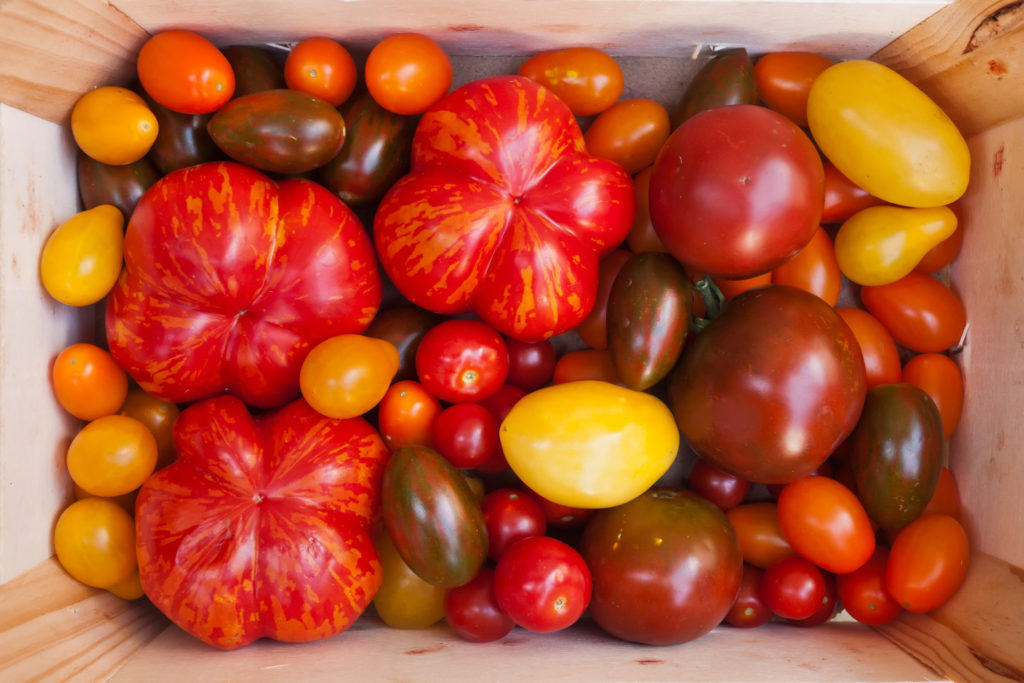
September things-to-do
Tomatoes. Pinch off the top of all tomato plants in September; remove at least six inches of foliage on each stem. Plucking away fruit-bearing foliage will allow the plant to put its strength into ripening tomatoes already on the vine.
After harvest, freeze tomatoes whole or sliced. Scald tomatoes for one minute then place them on oiled baking sheets in the freezer for one day. After freezing, the tomatoes can be bagged or boxed and returned to the freezer.
Peppers. Chili peppers ripen best on the vine; sweet peppers will ripen after picking. Sweet peppers left on the plant will keep fresh longer than those harvested. If you harvest peppers at the green stage, the plant will continue to set new fruit. To ripen sweet peppers out of the garden, lift the entire plant and hang it in a room or shed at 50°F (10°C).
Eggplant. Harvest eggplant when they are small; they are ready for use and most tender at one-third to half their mature size. Harvest an eggplant before its skin loses its shininess. Cut the fruits from plants with shears leaving some stem attached. Use eggplants shortly after harvest for the best flavor; they will keep one to two weeks at 50°F (10°C) after harvest.
Summer squash. Zucchini and straight neck and crookneck type summer squashes can be harvested at 4 to 5 inches (10-25cm) long; don’t let them sit in the garden too long and become seedy. Scallop and pattypan squashes are best small, no larger than 4 inches (10cm) across. Summer squashes will keep in the refrigerator for about two weeks.
Winter squash. Winter squash is ready for harvest when the skin is tough and the stems shrivel and dry. Cut them from the plant leaving 4 to 6 inches (10-15cm) of stem attached; fungi and bacteria can enter stored squashes if the stem is torn away. Leave winter squashes for winter storage on the vine until next month; rest fruits still in the garden on a piece of wood or brick to keep pests and disease at bay.
Shell beans. Leave shell bean plants in the garden until the pods become brown and dry. If wet weather comes, pull up the plants and hang them to dry by their roots in an airy shed or porch.
Potatoes. Maincrop potatoes are ready for harvest when the foliage begins to fade and some leaves turn brown. When leaves begin to fade, potato plants stop manufacturing food to feed the growth underground. Use a garden fork to gently loosen the soil then lift the tubers by hand. Let potatoes dry out for an hour or so on top of the ground; cure them at 55°F (13°C) for two weeks before storing. Store potatoes in a dark, cool well-ventilated place; place them in slotted boxes or bins or in baskets.
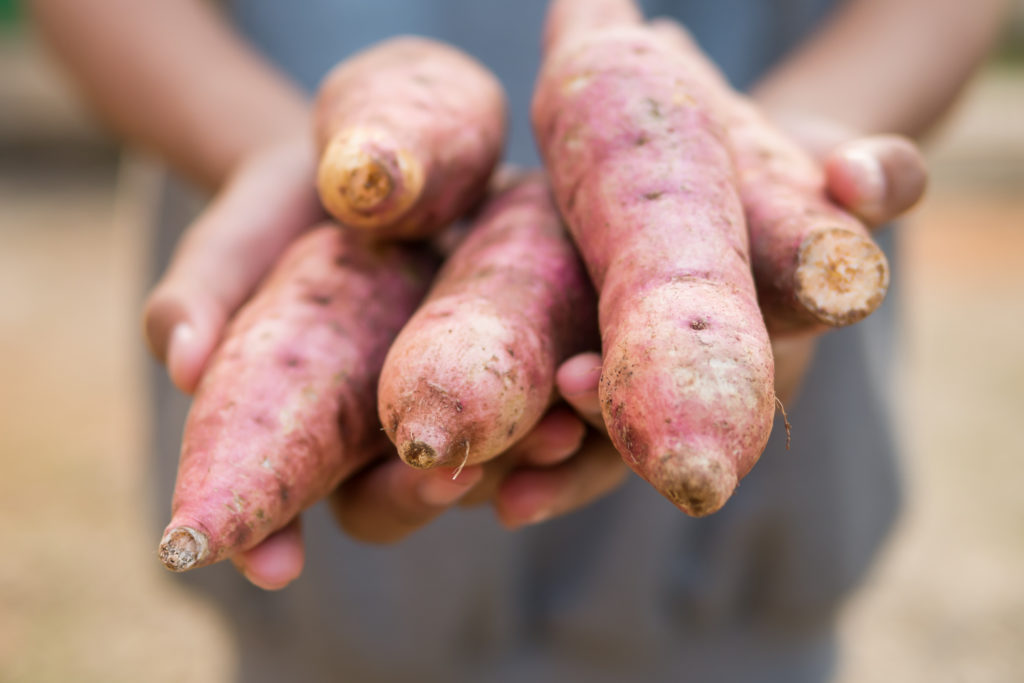
Sweet potatoes. Sweet potatoes are ready for harvest when the vines turn yellow and die or are killed by frost. The plants will stop growing at temperatures below 65°F (18°C); if exposed to temperatures below 50°F sweet potatoes will deteriorate rapidly. Lift sweet potatoes with a garden fork; let the roots sit in the sum for a day or two to cure; then place them in a shady area at about 80°F (26°C) for a week to 10 days. Cure sweet potatoes before you store them.
Rutabagas. Rutabagas can stay in the ground past one or two frosts but should come out of the garden before the soil freezes. Place rutabagas and other root crops in plastic bags with holes punched in them for air circulation. Place roots in the refrigerator crisper or a humid root cellar with the temperature just above freezing. Bagging will keep roots clean, provide a steady temperature, and seal in an even moisture level.
Carrots. Lift maincrop carrots with a garden fork and cut off the tops. Begin the harvest by lifting fingerlings which will be most tasty eaten right away. Use split root carrots as soon as possible as well. Winter store the remainder of the crop in layers in deep boxes, with ½ inch of sand between each layer. Place storage boxes in a dry shed.
Lettuce, spinach, and other greens. Keep lettuce, spinach, and other greens trimmed so that they will not bolt. Harvest greens cut-and-come-again, removing outside leaves first. To avoid looseleaf lettuce bolting where the weather, take a knife and slice off the whole head 1 inch (2.5cm) from the ground; you can get two, three, or four cuttings from a single plant each season using this method.
Shallot and onions. Harvest shallots when the tops are yellow and shriveled. Lift bulb onions after about half the leaves have fallen over (a third in warm regions). Before lifting bend over the tops that are still standing and let the bulbs ripen for three or four more days before lifting. Let them cure in the sun or a warm, dry place for a week; don’t store onions until the top and papery skins are dry and crinkly.
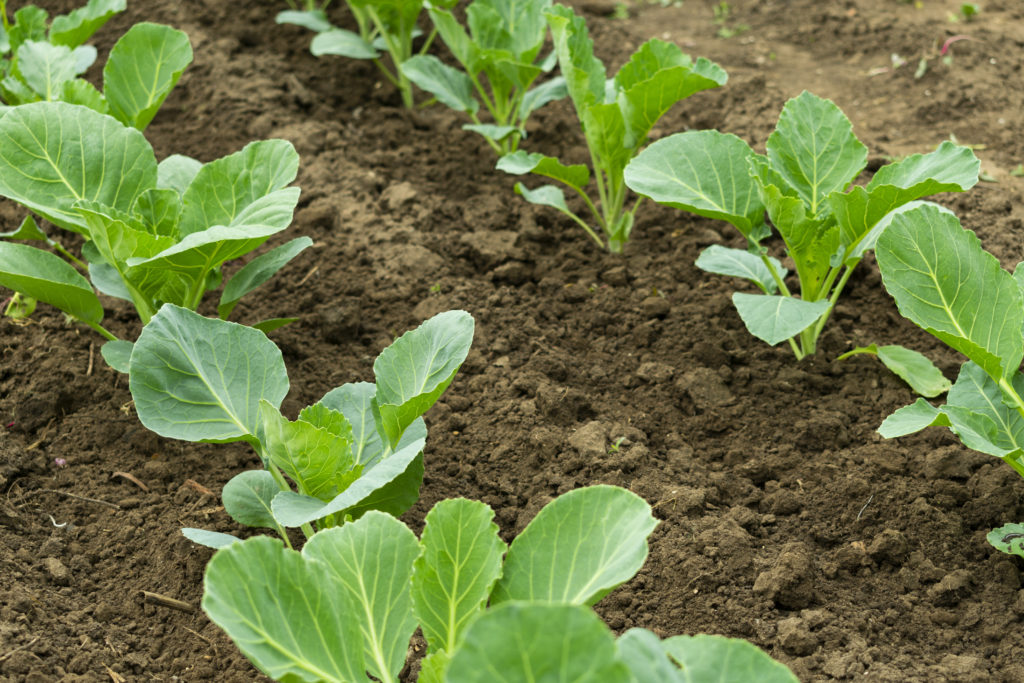
Cabbage. Plant spring cabbages in beds that have been amended with aged compost and manure. Where winters are wet, plant spring cabbages on ridges 9 inches (23cm) high. Add a pinch of bone meal into each hole at transplanting. Set the plants with their bottom leaves at soil level, firming them in with your heel and then watering.
Watering. Keep the garden watered in autumn; there is still plenty of warm weather coming and crops depend on soil moisture to make their final growth and ripen.
Protecting crops. Cloches or plastic tunnels will offer low-temperature protection for crops including lettuces, spring cabbages, broad beans, and carrots. Winter crop protection will reduce losses during winter and hasten maturity in spring. Put hoops in place now so that crops can be covered quickly when frost threatens.
Herbs. Sow parsley and chervil now for a spring crop. Divide and replant clumps of bergamot; about one foot apart, preferably in rich soil. Take cuttings of bay, lavender, and rue and root them in sandy soil in a shaded frame or cloche.
Cleanup. Begin garden cleanup as crops come out of the garden. Remove any plant debris that will allow pests and diseases to overwinter. Where there has been no disease or pest problem, the green residue can be turned under.
Recordkeeping. Update your garden map and note the dates of dates the final harvest. These notes will come in handy next year.
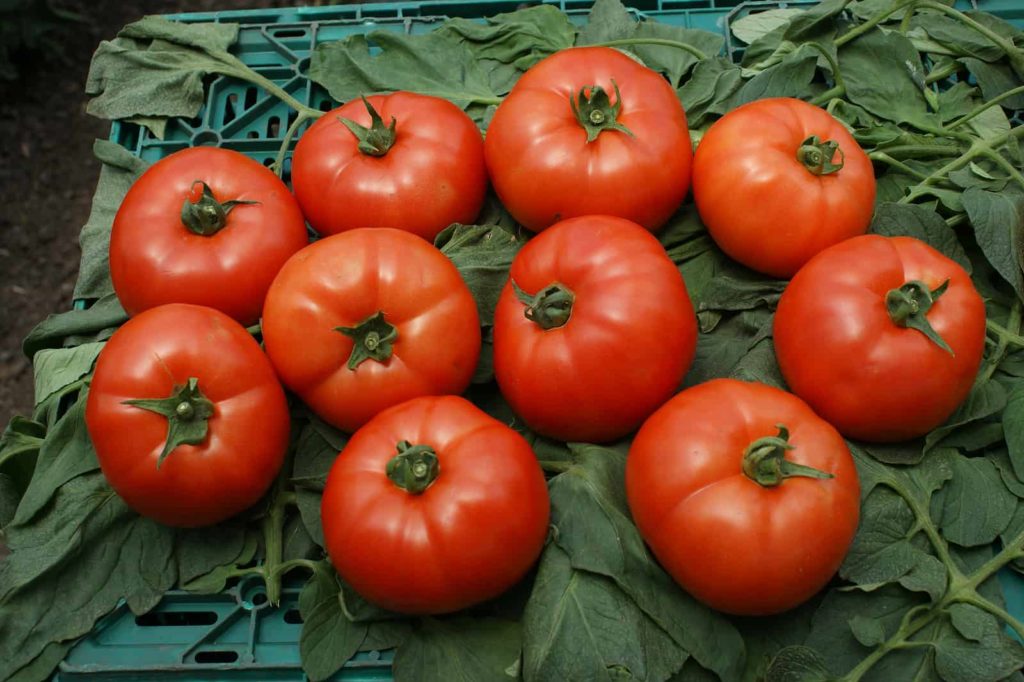
Quick-store the summer harvest
A heavy summer harvest of ripening tomatoes, peppers, squashes, and eggplants can be easily made into a base for soup, sauce, and juice and stored for winter use.
Each week during the summer and fall set aside 40 minutes to quickly prepare, cook, and freeze the vegetables that you can’t eat fresh or add to cooked meals. This winter you can quickly put your vegetable medley on the table for a taste of summer in minutes.
Ratio: To convert your summer harvest into a base for soup, sauce, or juice you will need about 1 pound of raw summer fruiting vegetables to ⅓ cup of liquid—water or vegetable stock. For example, if you have one pound of tomatoes cook it with ⅓ cup of vegetable stock—after you have peeled, seeded, and chopped the tomatoes.
(Three medium globe tomatoes, about eight plum tomatoes, and about thirty cherry tomatoes make a pound. A pound of tomatoes peeled and seeded, will yield about one cup of pulp for cooking.)
How to prepare the vegetables
- Step One: Peel, seed, and coarsely chop the tomatoes, add chopped onions, summer squash, eggplants, and bell peppers (cored and seeded), and put them in a large stock pot with water or vegetable stock (they should be just covered to start), and stir and simmer over low heat (about 15 minutes for two pounds of vegetables). Add whatever fresh chopped herbs are available and well-matched, especially basil and parsley.
- Step Two: Add salt, fresh ground pepper, and minced garlic to taste. Continue to simmer until the liquid is reduced to half the original volume (about another 10 minutes or so if you started with two pounds of vegetables). Cool the mixture at room temperature for 30 minutes then pour into pint- or quart-size containers suitable for freezing and cover with a sealable lid.
How to serve the vegetables
- Soup: Use this vegetable medley as is or puree with a little cream; gently heat to serve.
- Stew: Add beans and short pasta as well as other vegetables like potatoes, corn, peas, and celery; gently heat to serve. You can also add stew meat or shredded chicken.
- Pasta sauce: Add some chopped celery and carrots sautéed with bacon, ground beef, or sausage, and fresh or dried oregano to flavor.
- Juice: Puree the mix and serve cold or at room temperature as juice.
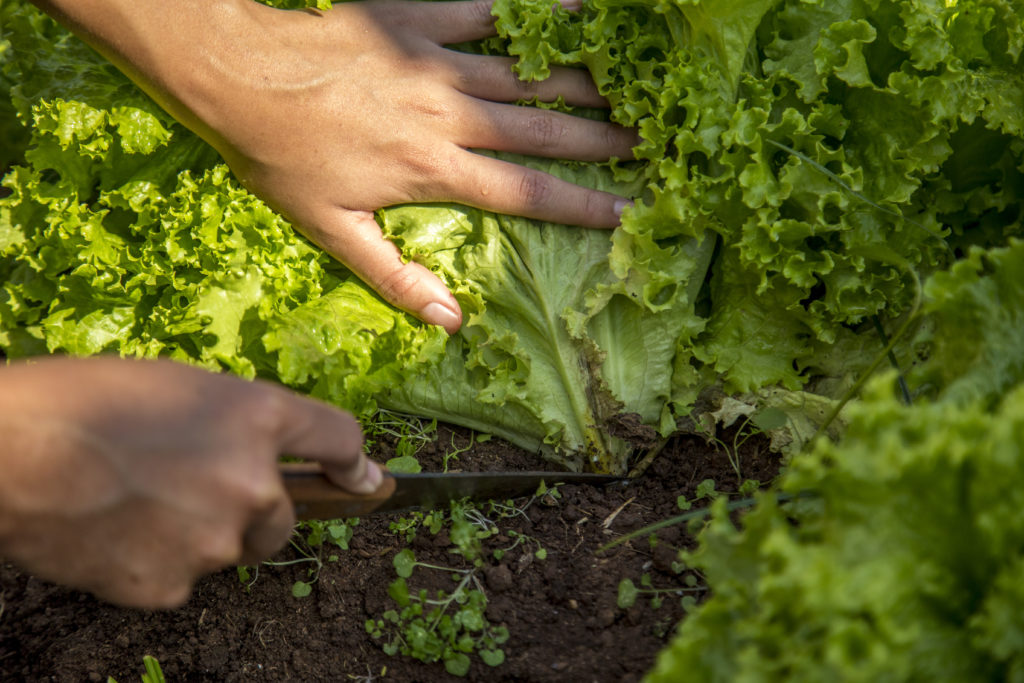
Additional tips for September
September harvest. Tender vegetables such as tomatoes, peppers, winter squash, and pumpkins must be picked before the first frost. Harvest broccoli, cabbage, cauliflower, and kohlrabi when they’re ready. If not picked, these crops must be covered on freezing nights. Remove the bottom leaves from the lanky stems of Brussels sprouts to direct energy to the sprouts. Potatoes, onions, turnips, carrots, and other root crops should be lifted before the ground freezes. Kale tastes best harvested after the first frost. Harvest and store green tomatoes before the first frost. Bring unripe tomatoes indoors to ripen; hang plants upside-down in a cool cellar or attic, where the fruit will ripen and can be used well into fall. Save seed from heirloom beans, tomatoes, squash, and melons.
Extend the season. From the date of the first frost, autumn and winter gardening will go undercover; use cloches, plastic tunnels, and cold frames to extend your growing season. Protecting crops from cold temperatures will allow you to stretch the harvest and set out new crops in autumn and winter. Use plastic tunnels and cold frames to grow leafy and root crops through the winter.
Second spring planting season. If you live in a frost-free or nearly frost-free region, the “second spring planting season” will arrive later this month. In the second spring season, plant the same cool-season leafy and root crops you planted in spring. In regions where the weather chills but never drops to freezing cool-weather crops can go back into the garden and your second spring will begin.
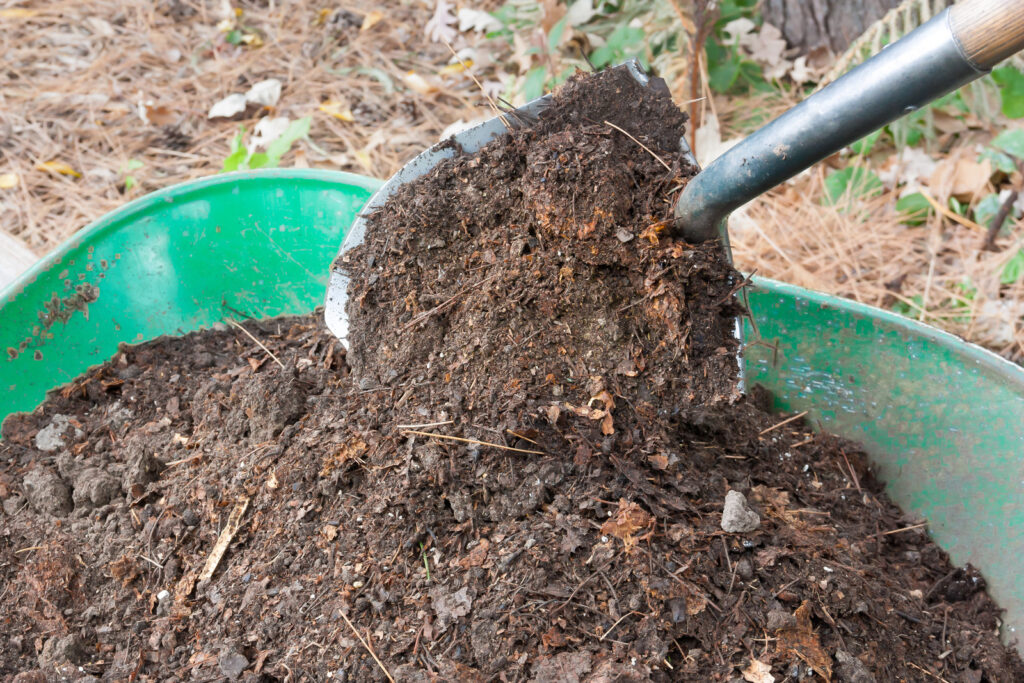
Fruit trees. Harvest ripe apples, pears, and other late fruits, then freeze or can them. Rake dropped fruit and leaves up under fruit trees to disrupt the life cycles of pests. Mow tall grass and weeds in orchards. Wrap trunks of young trees to prevent sunscald. Place mouse guards around the trunks of young trees. Mulch trees in a ring 8-12 inches (20-30cm) from the trunk before the ground freezes. Watch for pests and signs of disease.
Grapes and berries. Pick grapes only when ripe and only in dry weather. Too much handling destroys the grape’s protective bloom. Cut back old bramble canes and mulch them. Tie in new fruiting canes of blackberries and loganberries. Set out new strawberry plants.
Order bare-root fruit trees. Apples, pears, peaches, plums, and grapes may be ordered now for delivery in time for spring planting.
Asparagus maintenance. After asparagus stalks have turned yellow, cut them off at ground level and apply a cover of well-rotted manure.
Garden clean-up. Clean the garden after crops have been removed. Plant debris left in the garden over winter can harbor pests and diseases that will emerge in spring. Clean the garden.
Amend the soil. Dig compost or commercial organic planting mix into the soil wherever the last crops have come out. Top dress the garden with aged manure or plant a green manure cover crop such as buckwheat, annual ryegrass, or winter rye as soon as possible.
Green manure. If you do not plan to keep the kitchen garden growing with cool-season crops during autumn and winter, consider planting the beds with a green-manure cover crop. Green manures or cover crops add organic matter to the soil; they are tilled or turned under before they flower. Cover crop roots keep the soil loose, moist and aerated when vegetables are not in the garden. They also protect the soil from winter rains and erosion and add nutrients to the soil–thus green manure.
Green manure cover crops include annual rye or ryegrass, buckwheat, and winter rye. Other excellent cover crops come from the legume family: clovers, vetches, and alfalfa. The roots of legumes add residual nitrogen to the soil which will benefit vegetables and herbs growing in the garden next season.
Make compost. Select a spot for a garden compost pile. Compost can be made of alternate layers of garden and vegetable refuse, soil, and manure. The bottom layer should be 6 inches (15cm) thick; use coarse materials such as shrub prunings, corn stalks, and straw. Top this with 4 inches (10cm) of cow or horse manure; cover with 4 inches (10cm) of soil plus the same amount of leaves, lawn cuttings, weeds, and vegetable tops, mixed together. Avoid using pest or disease-infected cuttings. Keep the top concave so it will retain rainwater or wet the pile down every ten days during warm weather. Turn the compost pile occasionally to add air to the mix. Rich humus compost should be ready in about 9 months with no additional effort.
Container gardens. Harvest vegetables and herbs from containers. When the plants are spent or killed by frost, remove the plants and compost them. Clean and disinfect the containers before storing them for winter.
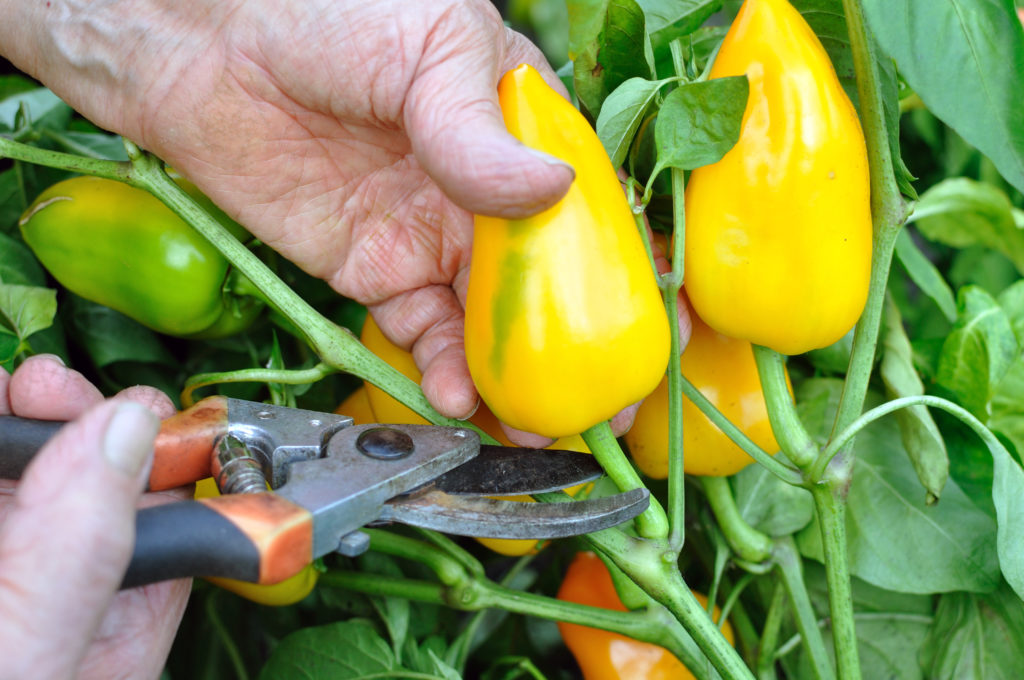
Regional gardening suggestions for September
These suggestions are divided into 4 major geographical areas: North and East and Midwest (zone 2 in the northernmost areas to zone 6 along the Atlantic coast), the South (zones 7 in the north to zone 10 in the far south), the Southwest and California (zones 7 in the coolest areas to zone 11), and the Northwest (zones 5 in the highest elevations to 8 along the coast).
North and East and Midwest
Frost is possible in some areas before the end of September. Check the number of frost-free days left in your area by counting back from the average first frost date for your region. You may have time to sow quick-maturing crops without protection. Plant fall salad greens such as spinach, winter lettuce, arugula, mâche, corn salad, mustard, and radishes. Use a cold frame or plastic tunnel if time is short. Plant next year’s garlic crop and divide multiplier onions. You can leave root crops in the ground until a serious freeze; parsnips taste best when exposed to frost. In the cold frame, sow parsley, lettuce, spinach, and chives. Parsley can be grown indoors during winter. Clean cold frames and line with straw before planting. Sow a green manure cover crop in vegetable beds that are done for the season.
The South
Some very hot weather is still possible. Plant autumn salad greens now: leaf lettuce, Romaine lettuce, and mesclun. Plant as many greens this month as needed. Greens prefer rich soil, so apply plenty of compost. Plant hardy winter vegetables now in the Upper South: beets, Brussels sprouts, carrots, chard, cress, corn salad, kale, kohlrabi, onion sets, spinach, radishes, rape, turnips, leeks, mustard, and lettuce. Be prepared to cover plants if a hard frost is expected; cover plants quickly with hay or grass or cloches. In the Lower South plant bush snap beans, cabbage, cauliflower, celery, collards, endive, lettuce, onions, parsley, Irish potatoes, rutabagas, and turnip. Also, plant sweet potatoes now for spring use. In frost-free regions such as Florida, continue to plant warm-season crops such as tomatoes.
Southwest and California
Hot and dry weather can continue for several more weeks. Your “second spring” planting season begins in late September in the warm-winter regions of California and the Southwest. Plant seeds of broccoli, cabbage, and cauliflower in flats; these young plants will be ready to transplant into the garden as summer vegetables come out of the garden. Plant beets, bush beans, carrots, chard, Chinese greens, endive, kale, leek, lettuce, mustard, early onions, parsnips, potatoes, winter radishes, spinach, and turnips. Set out starts: cabbage, cauliflower, Italian sprouting broccoli, kale, kohlrabi, Romaine and leaf lettuce, late potatoes, salsify, and late spinach. Garden peas can be planted now, but shade them if the weather continues hot. When nighttime temperatures drop below 50ºF the garden slows and when the temperatures drop below 40ºF the garden will approach dormancy, but in warmer temperatures and where there are few freezing days each year you can garden on. In regions where frost will come before plants mature prepare portable cold frames and tunnels to cover crops after the first freeze. In most regions, protected winter gardening is quite doable.
Northwest
The weather will vary and can be unpredictable. Be sure to check the number of frostless days left in your area. Check seed packets and choose “fall” and “late” varieties; they are quicker maturing plants. Sow radishes and spinach. Set out starts of late cabbage, cauliflower, Brussels sprouts, and broccoli. Divide rhubarb clumps now; leave one or two eyes per root. Clean the garden of debris as you complete your harvest. Continue to sow or set out vegetables that will reach maturity before the first hard frost; these winter harvest crops can be maintained and harvested with protection well into winter.
Southern Hemisphere in September
September brings in spring and ends winter in the Southern Hemisphere.
The first day of spring in the southern part of the world this year is September 22. On this day, the sun rises directly in the east and sets directly in the west. The time between sunrise and sunset is exactly 12 hours.
March can be both wintery and spring-like. Some days will be blustery and others will be mild and sunny.
Sap flows in the trees in March and green buds begin to appear. Early songbirds will arrive this month.
Vegetables: The work of the spring and summer vegetable garden can begin during March. Prepare vegetable garden beds. Winter mulches can be removed. Peas and spinach can be sown outdoors where they are to grow as soon as the ground can be worked. Onion sets can be planted this month also.
Now is the time to sow outdoors cool season vegetables: cabbage, cauliflower, celery, Brussels sprouts, and broccoli. Other vegetables you can sow outdoors this month include artichoke, beets, carrots, cress, endive, gooseberry, kohlrabi, lettuce, radishes, spring onions, parsnip, potato tubers, radish, rhubarb crowns, rutabaga, salsify, spinach, Swiss chard, turnips, and Witloof chicory.
Indoors, you can start warm-season vegetables: tomatoes, eggplant, and squash. Start seeds in flats, give them full sunlight, and then be sure to transplant them to pots as soon as they become crowded or get their second pair of leaves.
Bare-root and Fruit: Prune winter-damaged fruit trees. Limit pruning of spring-flowering fruit trees to the removal of suckers and winter-damaged or crossing branches to save blossom buds. Apply dormant oil spray to fruit trees before the buds break.
Plant deciduous fruit trees while dormant. When the ground is workable, plant bare-root berry bushes, grapevines, and asparagus. Also, plant citrus this month. Fruit trees will begin to bloom this month. Feed established trees, and apply iron chelates if necessary.
Set out new strawberry plants. In six weeks, feed them with fish emulsion or rich compost. Pick off all flowers until mid-June.
Raspberries require more water than other cane berries because they root more shallowly. When set out, cut canes off to 4 to 6 inches (10-15 cm). When new growth is 1 foot (30 cm) high, nip off 2 inches (5 cm) to cause branching. Tie up berry canes for easier harvesting.
Grapes: Tie up branches of vines planted last year. Provide support for those planted this year. Cut off all branches when planting, allowing only one cane to develop.
Here is a planting schedule by region for the Southern Hemisphere in September:
Temperate regions: Vegetables: artichoke suckers, beans, beet, cabbage, cape gooseberry, sweet pepper, carrot, celery, chicory, chayote, cress, cucumber, eggplant, endive, kohlrabi, leek, lettuce, courgette, melons, mustard, spring onion, parsnip, peas, potato tubers, pumpkin, radish rhubarb crown, rosella, salsify, Swiss chard (silverbeet), squash, sweet corn, sweet potato, tomato, zucchini. Herbs: basil, borage, caraway, chamomile, chervil, chicory, chilies, chives, coriander, dill, fennel, garlic, hyssop, lemon balm, oregano, parsley, thyme.
Tropical and subtropical northern regions: Vegetables: beans, beets (beetroot), buckwheat, cabbage, cape gooseberry, capsicum (sweet pepper), carrot, celery, Chinese cabbage, choko (chayote), cress, cucumber, eggplant, fennel, lettuce, marrow, melons, mustard, okra, parsnip, peas, potatoes, pumpkin, radish, rhubarb crowns, rosella, salsify, silverbeet (Swiss chard), spring onion, squash, strawberry runners, sweet corn, sweet potato, tomato, zucchini. Herbs: basil, borage, caraway, chamomile, celeriac, chervil, coriander, dill, garlic, hyssop, lemon balm, marjoram, oregano, parsley, salad burnet, thyme.
Cooler southern regions: Vegetables: artichokes, beet, cabbage, cape gooseberry, sweet pepper, carrot, celery, cress, endive, kohlrabi, lettuce, spring onion, parsnip, peas, potato tubers, radish, rhubarb crowns, salsify, Swiss chard (silverbeet), rutabaga (Swedes), tomato, turnips. Herbs: basil, borage, caraway, celeriac, chamomile, chervil, chives, coriander, garlic, hyssop, lemon balm, oregano, parsley, salad burnet, thyme.
Here is a roundup of vegetables and fruits ready for harvest during September in the Southern Hemisphere:
Vegetables: artichoke, asparagus, beet, broccoli, Brussels sprouts, cabbage, carrot, celeriac, celery, Chinese cabbage, kale, lettuce, parsnip, peas, purslane, radish, rhubarb, Swiss chard (silverbeet), spinach.
Fruit: avocado, banana, cape gooseberries, grapefruit, lemons, limes, mandarins, navel oranges, passionfruit, tamarilloes, tangelos.
More about September
The Greeks honored Demeter during this month, and the Romans honored Ceres, goddesses of agriculture.
Harvest festivals and feasts come in September to celebrate the end of harvest.
In the garden this month, plant cool-season crops that will endure frost: beets, carrots, Swiss chard, head and leaf lettuce, mustard, onion seeds and sets, radish, turnips, and kale.
If late sowings of vegetables do not seem to be growing as quickly as they should in order to be ready for harvesting before frost, give them a side-dressing of compost tea or liquid manure.
Dig compost into the soil wherever the last crops have come out.
After asparagus stalks have turned yellow, cut them off at the ground level and apply a cover of well-rotted manure.
If you have a cold frame with well-prepared soil, you can sow seeds of lettuce, parsley, radishes, and carrots for crops during the fall and winter. Transplant young kale and lettuce plants to the frame for use in late fall and early winter. Keep the frame well-ventilated on warm days. You will appreciate having such fresh vegetables along about Thanksgiving time.
Bring in the last of your tomatoes before frost, plant, fruit, and all. Hang the plants upside-down in a cool cellar or attic, where the fruit will ripen and be used well into fall.
Collards, Brussels sprouts, and kale are better for eating after the first frost. Strip lower leaves of Brussels sprouts to encourage the sprouts to develop.















